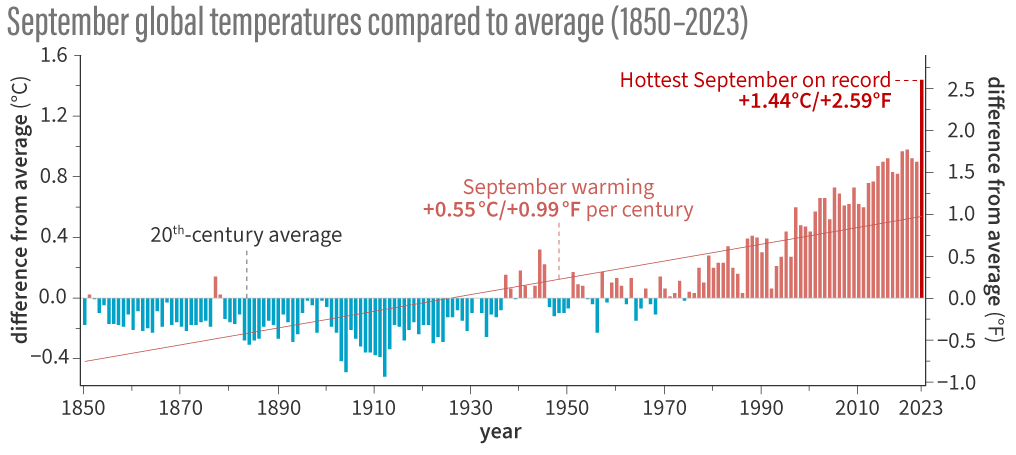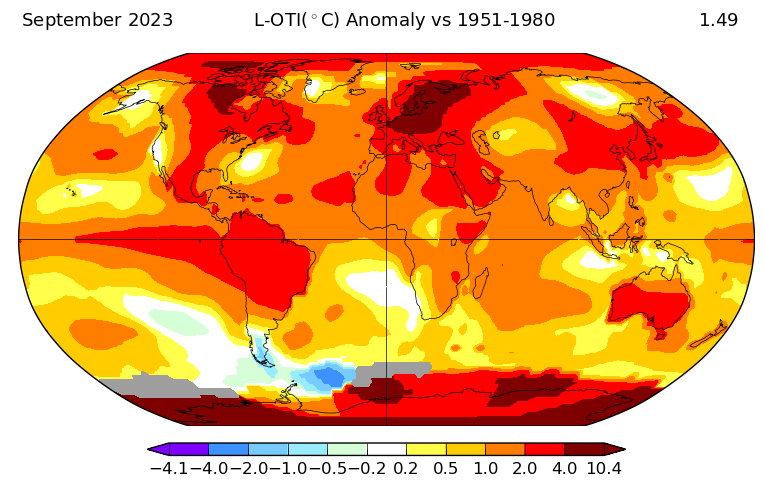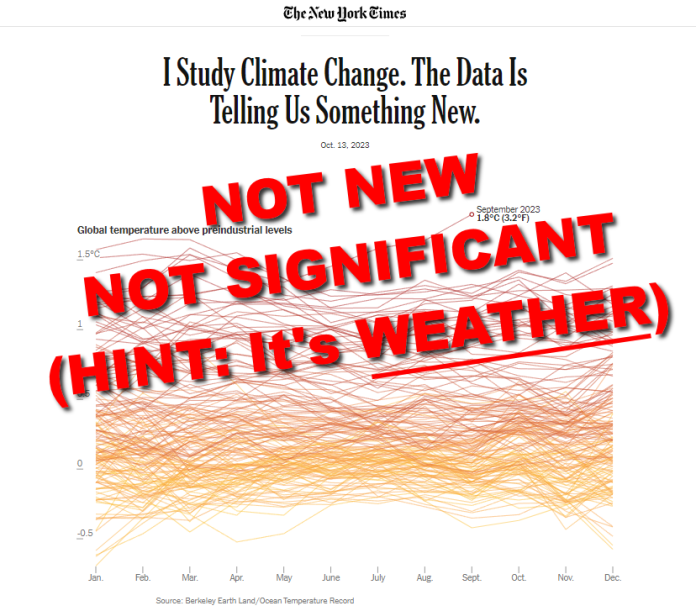A guest opinion article in The New York Times by Zeke Hausfather, Ph.D, titled “I Study Climate Change. The Data Is Telling Us Something New,” suggests that a single record warm month of data is an indication of “evidence that global warming has accelerated.” The claim is false for four reasons; because a single month isn’t representative of long term climate change, the data Hausfather cites isn’t in agreement with other datasets, and it isn’t representative of the globe, but a weather anomaly in Antarctica. Finally, the year-on-year increase in atmospheric carbon dioxide, said to drive such temperatures, wasn’t enough to cause the event.
First, one month of record high temperatures has nothing to do with long-term climate change, which is defined by the World Meteorological Organization as “…the average weather conditions for a particular location and over a long period of time.” To create a climate record, 30 years of weather data is averaged to create a “normal” climate expectation for a location or region. What we experience on a day-to-day basis are weather events, not climate events. Weather is not climate and therefore one September record high temperature is not a climate change indicator. Hausfather, being a climate scientist, should know this.
However, given the emotional and unscientific opening statement made by Hausfather in the article, “Staggering. Unnerving. Mind-boggling. Absolutely gobsmackingly bananas,” it seems he is prone to emotions over fact.
One errant month of high temperature will in fact change the slope of any temperature graph upwards, but that is not an indication of acceleration, but rather an outlier data point which are known to happen. For example, in figure 1, global temperature data released by Climate.gov shows what looks to be a clear data point outlier in September.

In statistics, an outlier is a data point that differs significantly from other observations. It happens in almost every data set, and in the case of Earth, which has chaotic weather systems, not at all surprising. Again, Hausfather should know better.
The article goes on to claim:
As global temperatures shattered records and reached dangerous new highs over and over the past few months, my climate scientist colleagues and I have just about run out of adjectives to describe what we have seen. Data from Berkeley Earth released on Wednesday shows that September was an astounding 0.5 degree Celsius (almost a full degree Fahrenheit) hotter than the prior record, and July and August were around 0.3 degree Celsius (0.5 degree Fahrenheit) hotter. 2023 is almost certain to be the hottest year since reliable global records began in the mid-1800s and probably for the past 2,000 years (and well before that).
Note that we didn’t have thermometers 2000 years ago, so this is pure speculation.
Other datasets and scientists don’t suggest that this summer or September was anything unusual, for example, climate scientist Roy Spencer, Ph.D, ran a guest essay here in Climate Realism last week, saying:
“Record warmth” in any given year is usually measured in mere fractions of a degree Fahrenheit. As global data from the National Oceanic and Atmospheric Administration suggest, for example, this summer’s “record” (averaged from June through August) warmth averaged only 0.43 degrees warmer than in 2019 and 2020, the next-warmest years.
The small difference in average temperature also comes with wide variation, which makes climate change considerably more nuanced than usually reported by the mainstream media.
Natural weather patterns, including a growing El Niño event, contributed to the warm summer and September.
Thirdly, not all of the Earth was abnormally warm. In fact, the real “spike” in temperature was limited mostly to a place that didn’t get above freezing – Antarctica. While Hausfather and excitable journalists are now telling the world how hot and terrible September was, the bottom line is that the winter temperatures in Antarctica, also a weather event, we less cold than normal. This is easily seen from two graphs provided by NASA Goddard Institute for Space Studies (GISS) that produces a GISTEMP product illustrating the issue, seen in Figure 2A and 2B below.


Clearly, the “hottest” place on the planet in September was Antarctica, yet the temperature over the continent didn’t get above freezing during the Sothern Hemisphere Antarctic Winter (opposite of our summer in the Northern Hemisphere). It was just “less cold” than normal. That’s hardly a reason for concern, but the big spike in Antarctic temperature skewed the global data to make it look like the places that matter, where the world population lives was abnormally hot.
Finally as outlined in the Heartland Daily News, Hot Summer Due to Many Factors—Carbon Dioxide Emissions Are Not One of Them. there was a wide variety of other factors to consider: blocking weather patterns, solar activity, increased water vapor, El Niño, and an increasingly active sun.
According to the NOAA Global Monitoring Laboratory the amount of atmospheric carbon dioxide increase from September 2022 to September 2023 went from approximately 416 to 418 parts per million (PPM). Just 2PPM increase isn’t enough to explain the jump in temperature. In fact, according to this data graph, that’s much less than the yearly global variation of atmospheric carbon dioxide.
In summary, this end paragraph from the Heartland Daily News article says it best:
In short, there is a complex explanation for the complex weather patterns that have prevailed this summer. Multiple geologic, solar, meteorological, and atmospheric events have occurred simultaneously, resulting in unusually high summer temperatures obtaining over much of the world. Fossil fuel use does not cause volcanic eruptions, oceanic and wind current shifts, or changes in solar activity, thus climate change cannot fairly be blamed for the present pattern of heatwaves, which long-term data show have not increased.
And, as stated before, climate scientist Zeke Hausfather should know better than to write up a scare story about temperature with the adjectives “Staggering. Unnerving. Mind-boggling. Absolutely gobsmackingly bananas.“
























Another climate change zealot throwing out false claims just to entrap the informed sheeple willing to believe anything! Any thinking person would realize that this is pure propaganda and has nothing to do with scientific fact! Just another illustration of how the climate change narrative is what matters not what actually occurred or can be explained by statistical variability! Shame on you Herr Hausfather, PhD of hyperbolic nonsense!